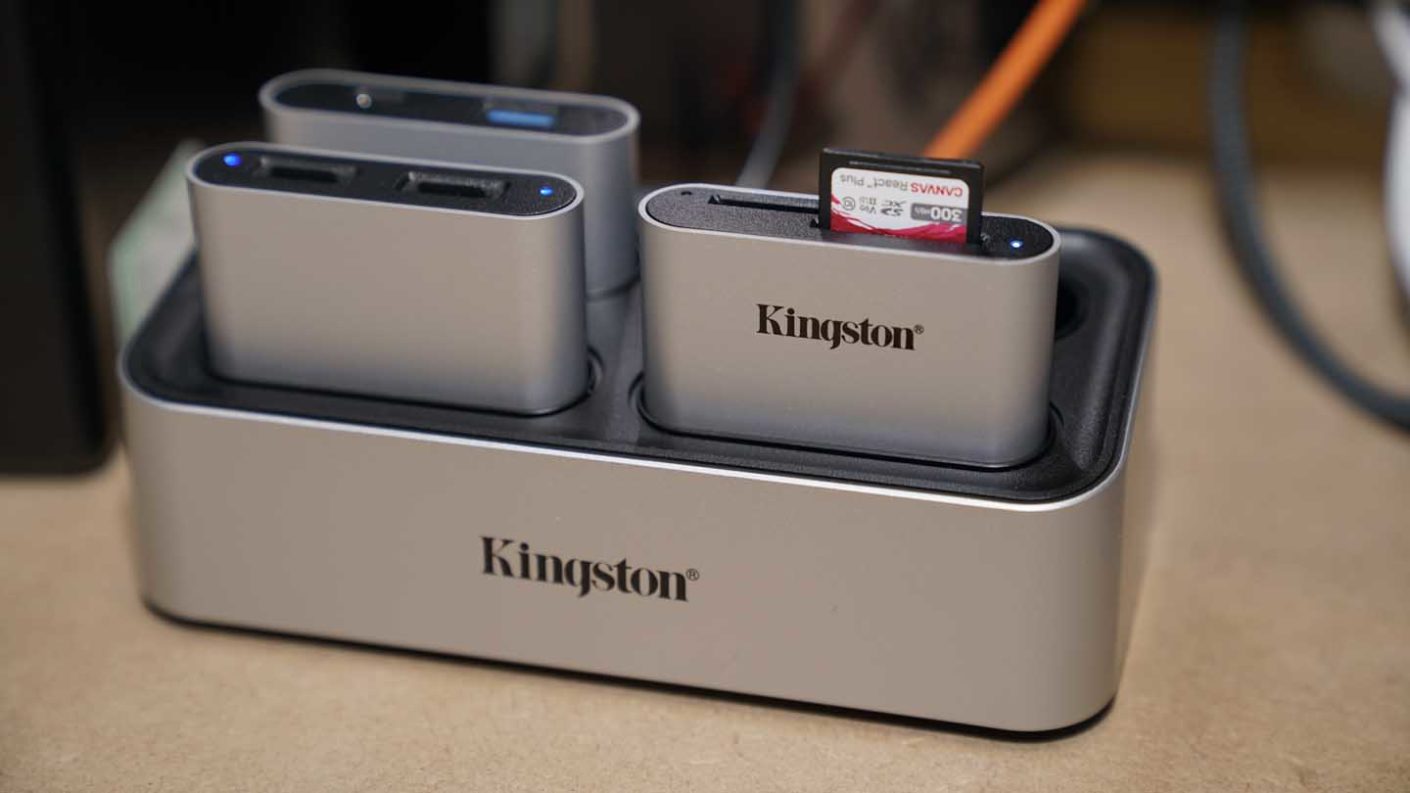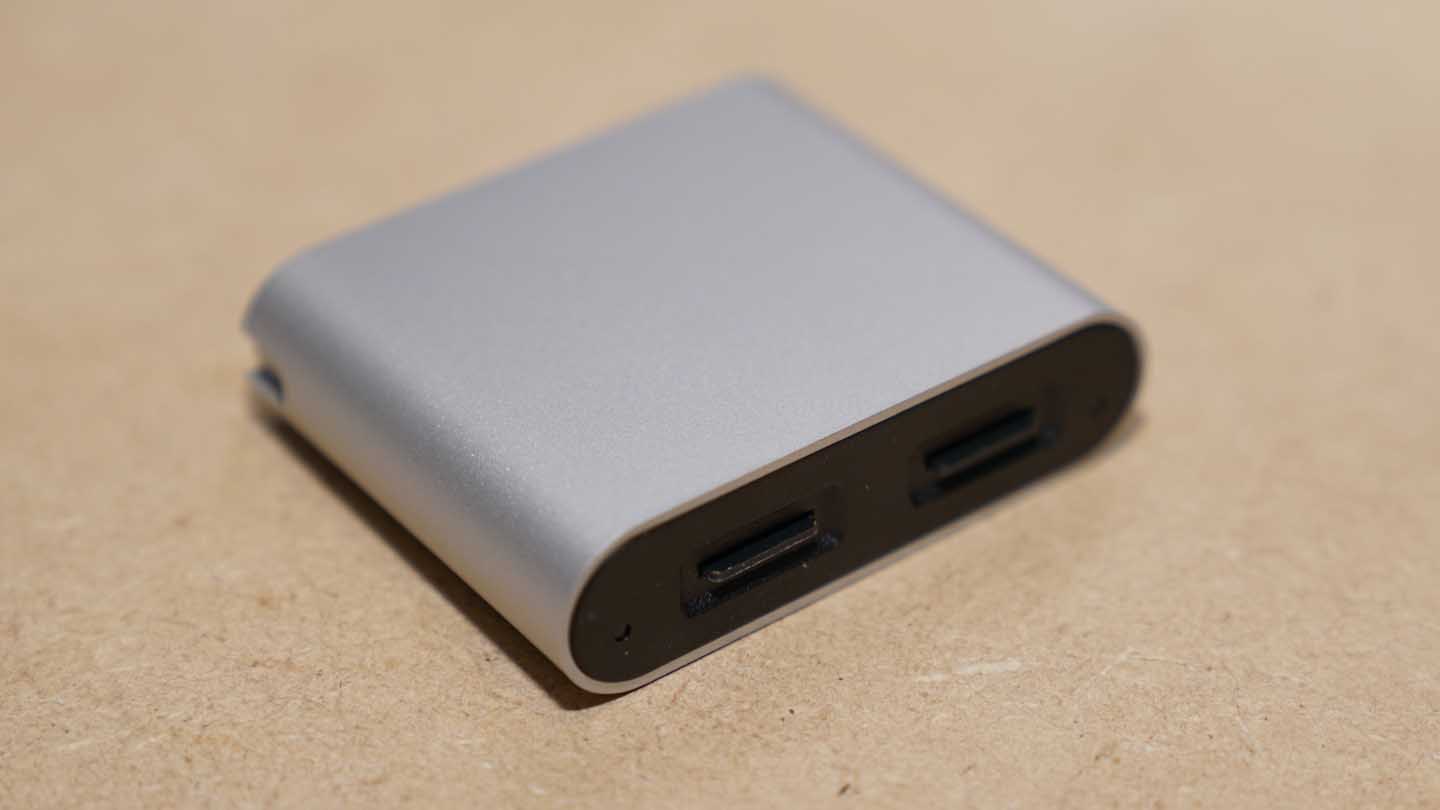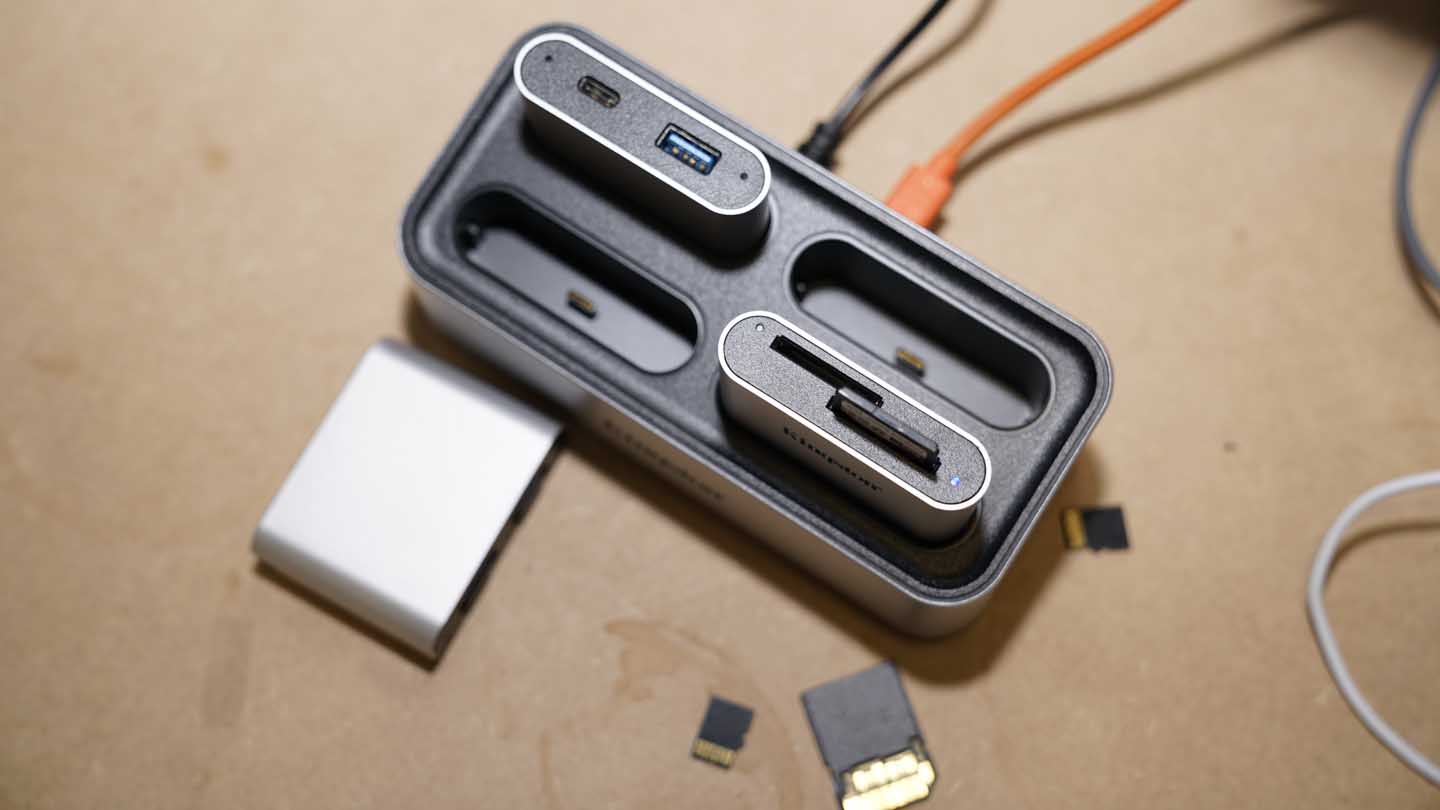Card readers are an essential part of the photo and video workflow, and while you can download directly from your camera, a card reader makes sense.
The Kingston Workflow Station features a modular design and follows the same design principles as the excellent Lexar CR1.
There are three modules available with the USB hub that feature USB Type-A and USB Type-C and are included with the box’s workflow station.
In addition, there are the SD and MicroSD modules; these both feature two slots for compatible cards.
At present, these are your only options, but due to the modular design, there’s plenty of scope for expansion for CFExpress and CFast, along with any other new format that comes along.
Each of these modules slots into the Workflow Station and is instantly recognised as any other card reader.
The Workflow station offers four slots that can take the different modules, or you could opt to fill all slots with the SD modules, giving you the option to download 8 SD cards in one go.
As well as being able to slot the memory card readers into the Workflow Station, you can also use them on their own as standard card readers. On the back of each is a USB Type-C connection, and a cable is provided with each of the optional modules.






